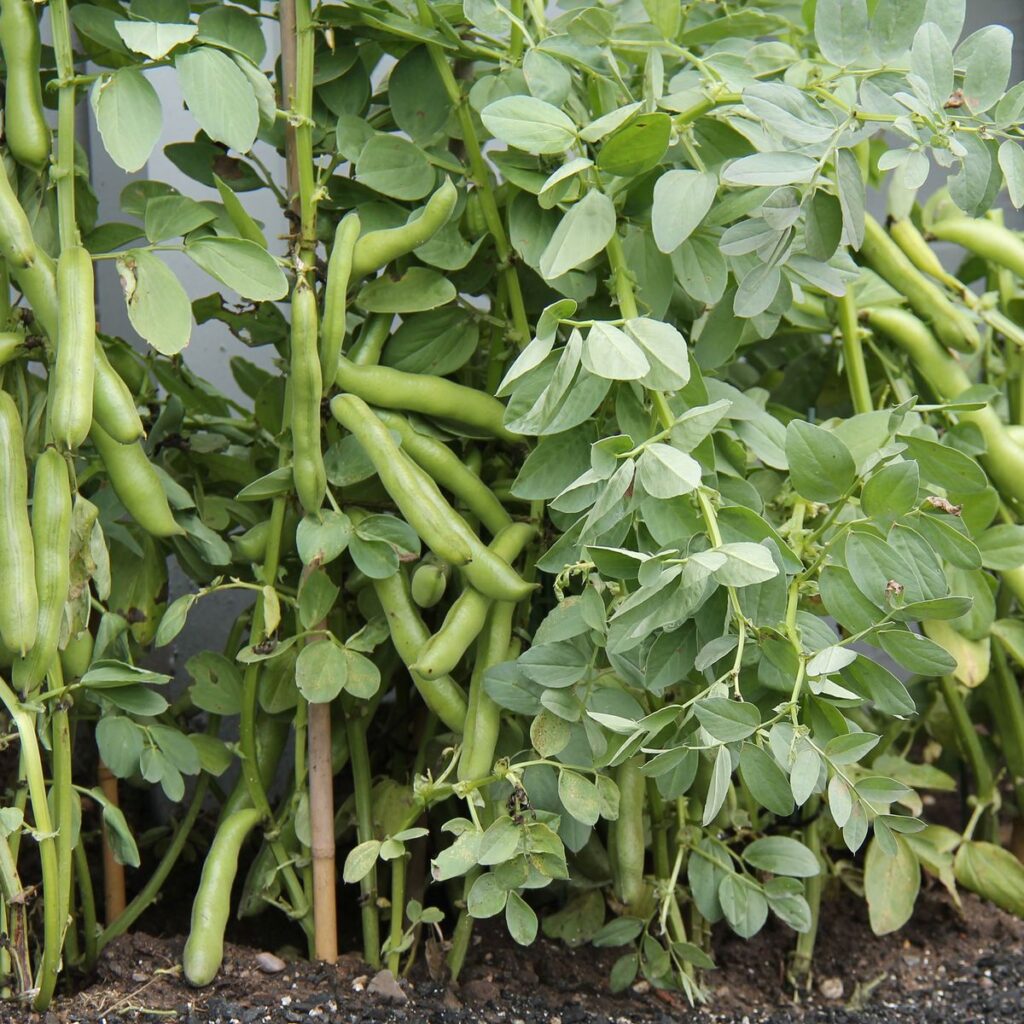We’re venturing into bleak midwinter territory, but you can still learn how to grow broad beans – in fact, now is the best time to tackle this hardy vegetable if you want a tasty crop come summer.
That’s right; it’s not too late to grow your own vegetables there are more than a few fruits and vegetables that you can grow in December with broad beans one of the main ones.
Broad beans are considered one of the easiest vegetables to grow and one of the best crops to try if you want to start a small vegetable garden in the new year.
‘Broad beans will grow over the winter months, which means that you’ll be harvesting fresh homegrown beans in spring to early summer the following year,’ promises Morris Hankinson, director of Hopes Grove Nurseries.
Intrigued? Here’s everything you need to know about growing broad beans in your own backyard…
What you will need
Broad bean seeds are readily available in most garden centres and from online retailers – as are potted plug plants. Still, it’s always more fun to sow seeds if you can.
‘There are many varieties available, but if you’re planting in December, I suggest you choose hardy winter broad beans,’ says Morris. Something like the well known Aquadulce broad bean (available in seed packets from Amazon) will be better suited to prolonged cold temperatures, he adds.
You will also need:
Step-by-step guide
As per the Royal Horticultural Society (RHS), broad beans are usually sown in late winter (indoors, or outdoors with protection) or spring (outdoors), for summer harvests.
Skip ahead, then, to step 3 if you’re planting your broad beans in the springtime.
1. Start them off in pots
It’s best to plant your broad bean seeds individually into small pots or seed trays that have been filled with peat free multi-purpose compost.
‘Gently push the bean about 5cm deep into the compost, water them well, and keep them in an unheated, undercover place such as a greenhouse or cold frame,’ says Morris.
2. Plant them out
You’ll want to plant your broad beans out ‘when the pots are full of roots’, says Morris.
While you should always harden seedlings off before popping them outdoors, Morris says you can try covering them with horticultural fleece (try Astbury’s H&G Plant Protection Fleece from Amazon) if the weather is very cold.
‘This will be helpful not just to protect from frosts, but also from hungry wildlife,’ he explains, adding that you should remove the fleece as the weather warms up in spring.
3. Prepare the soil
Whether you’re planting directly into the ground or a raised garden bed, Morris says that you must make sure your broad beans are sown into ‘well prepared soil that’s had some well rotted organic matter mixed in’.
Be sure, too, to weed the area thoroughly, and feel free to add a high potassium general fertiliser, such as Vitax Q4 All-Purpose Plant Food from Amazon.
‘They also need a spot that gets plenty of sunshine,’ he adds.
4. Space them out
If you’re learning how to grow broad beans, know this: you will need to sow the seeds/seedlings about 5cm deep and 20cm apart.
‘Single rows can be sown 45 to 60cm apart, and double rows around 23cm apart’ adds Morris, who notes that you must ‘firm down the soil and water’ your broad beans well once they’re in the ground.
5. Show them some TLC
Broad beans will need to be watered well when they begin flowering (unless there’s been very heavy rainfall), and stakes are a good idea for taller varieties in need of some extra support.
Those flowers don’t just mean it’s time to get the watering can out; you’ll also need to watch out for small pods to form at the bottom, as this will mean it’s time to pinch out the shoot tips at the top. Doing so will ensure that the broad bean’s energy goes into producing more vegetables and not more foliage.
6. Harvest them regularly
Broad beans can be ready to harvest from late spring to late summer, depending on the variety and when you began the growing process.
Use sharp secateurs to regularly harvest either the immature bean pods (about 7cm long) to cook whole, or the fuller beans that appear lower down on the plant.
The trick is to avoid letting your beans get too big or too mature, as these are tougher to chew on and lacking in sweetness, too.
7. Cut them back
After harvesting, cut the broad beans back down to ground level and leave the base in the ground for as long as possible to boost nitrogen levels in the soil. It’s basically a self-composting plant!
FAQs
How long does it take for a broad bean plant to grow?
It will take a relatively long time for a broad bean plant to grow (around 16 to 18 weeks) – if you’re waiting for those all-important vegetables to appear, that is. If you’re happy to just enjoy the plant, rest assured it will offer plenty of visual interest when it begins flowering.
Do broad beans need to climb?
While broad beans don’t need to climb, many of the taller varieties can benefit from some added support in the form of stakes or canes, especially if you live in a windy spot.
To do this, the RHS suggests you insert stakes at each corner of the rows and every 1.2m along the rows. All that’s left to do is tie a string halfway up the cane (around 50cm) and then again at the top (1m) to give your broad beans something to cling onto.
Now that you’ve mastered how to grow broad beans, all you really need to do is work out which recipes you’ll be using them in. Fritters, pasta dishes, salads, vibrant veggie sides, or simply roasted whole, the world is your oyster… or broad bean pod, if you prefer!
Read the full article here

